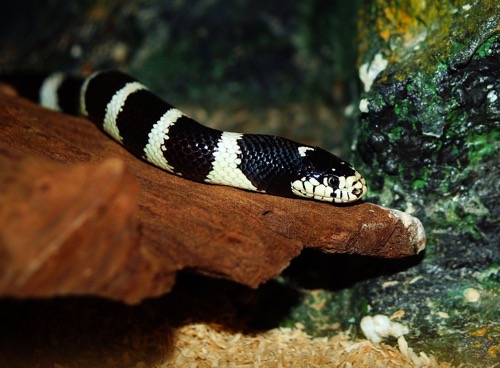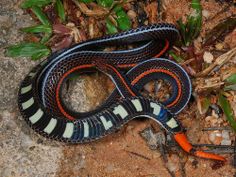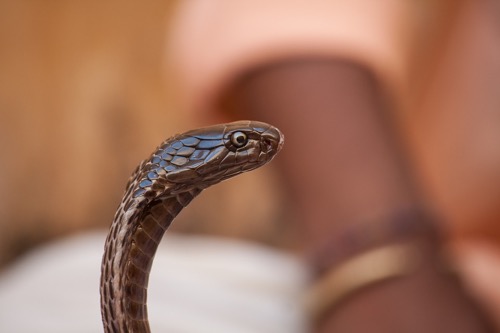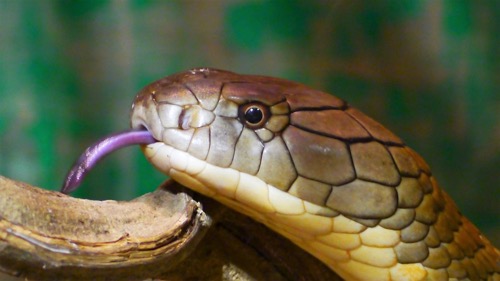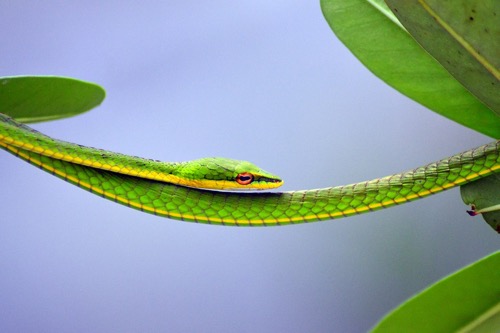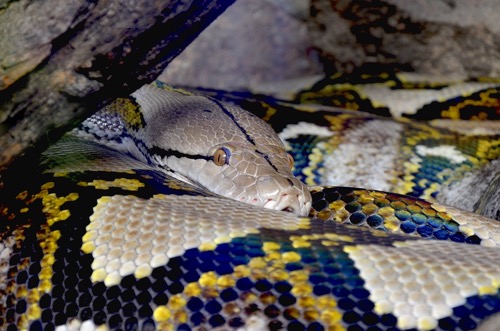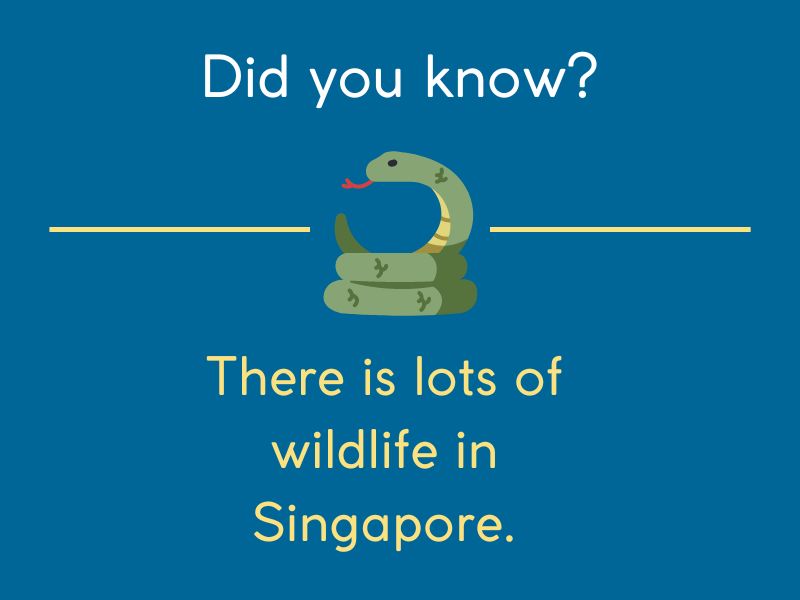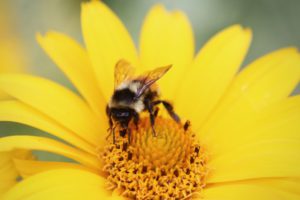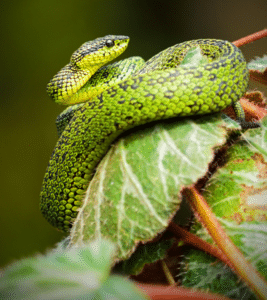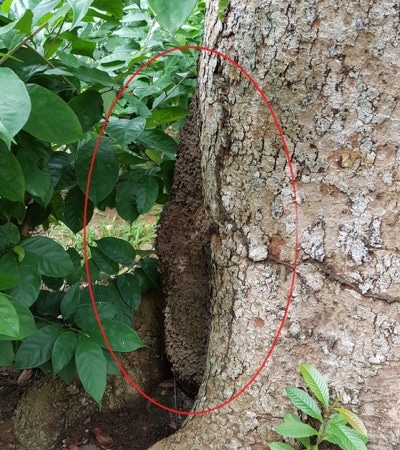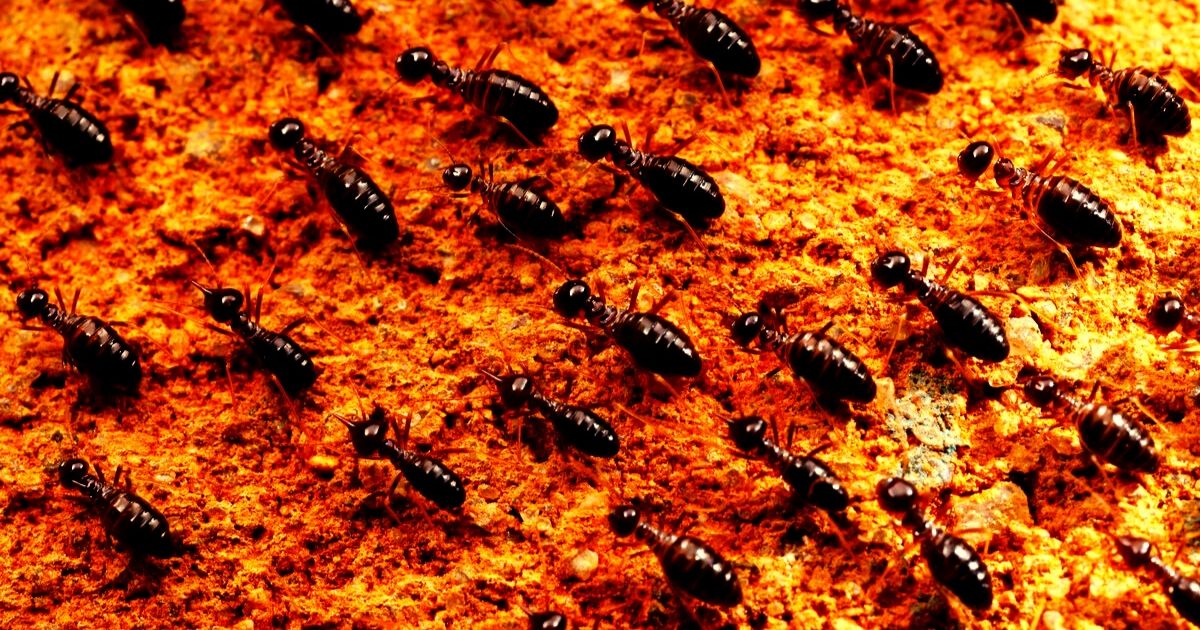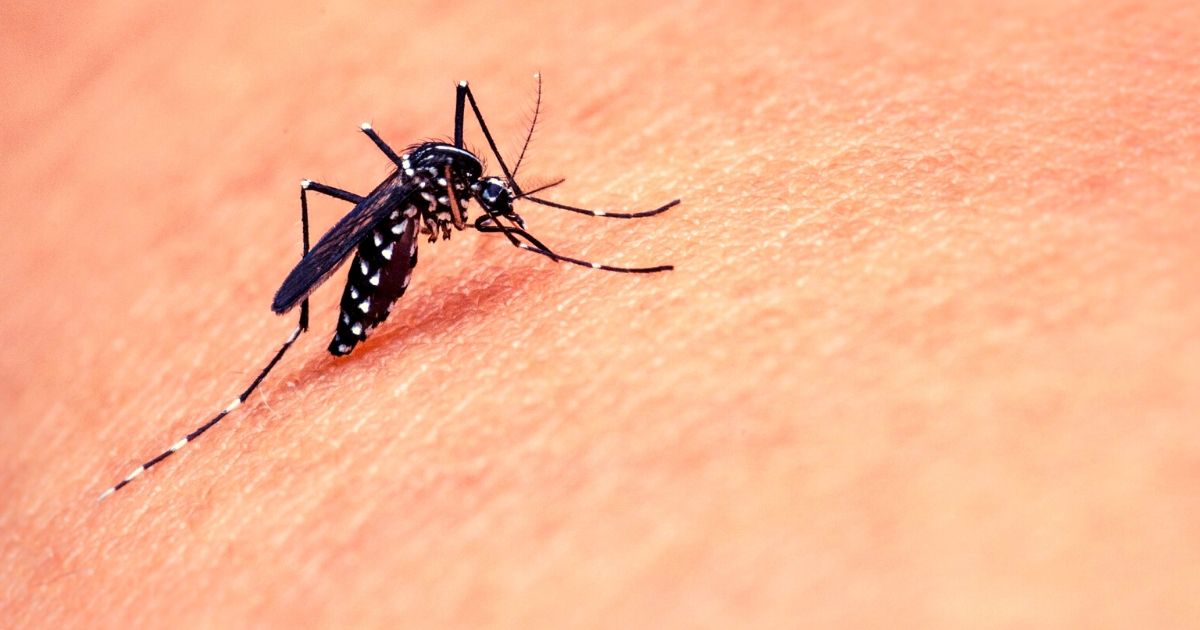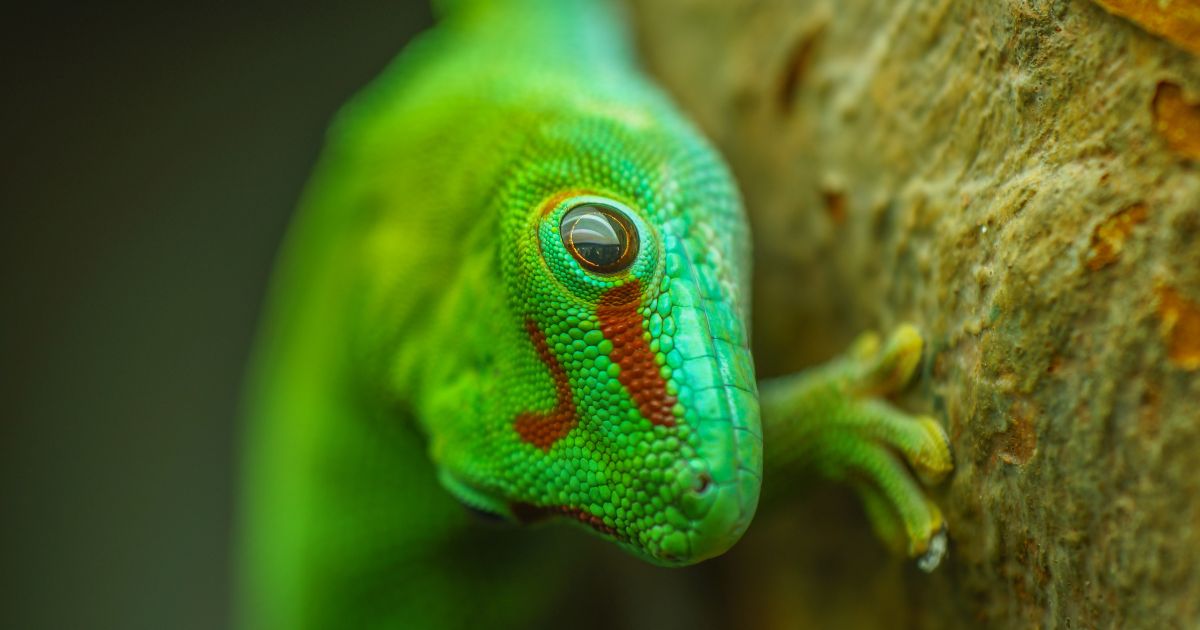The Complete Guide to Snake Prevention, Treatment and Control in Singapore
Snakes
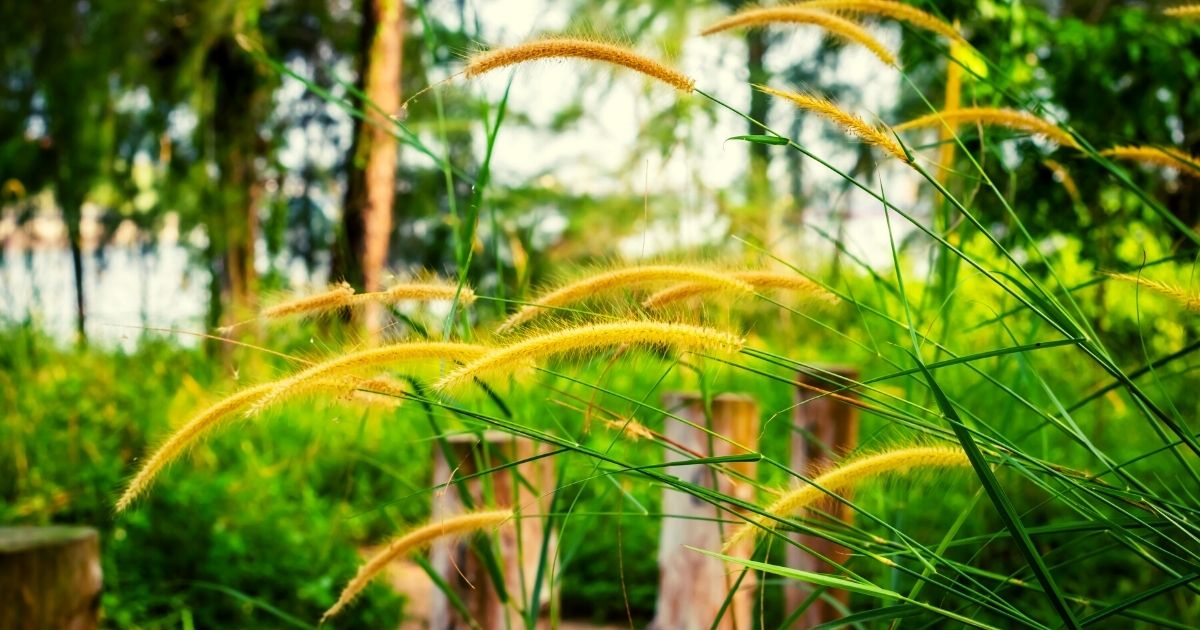
Snakes are one of the most common reptiles that we may encounter in our daily lives. Despite having no limbs, snakes can slither with smooth and agile movements. In Singapore, encounters with snakes are not rare. There are frequent news reports on snake presence in Singapore. Singapore is filled with green plants and colourful flowers; this landscape not only fascinates the public but also attracts a wide range of wildlife around the area.
As a tropical country, it is not uncommon to encounter snakes in Singapore and urbanisation has forced them to live in close proximity to houses and buildings.
Snakes are kept as pets by people in other parts of the world, but it is illegal to keep snakes in Singapore. Although snake enthusiasts may find their pets alluring, snakes can be fearsome to some people, especially those who have had bad experiences with snakes. One of the reasons that cause people to be afraid of snakes is their ability to deliver fatal bites. However, not all snake bites are dangerous. There are plenty of non-venomous snake species.
The encounter with a snake can be a surprise, hence, it is important to be educated and to understand the basics of how to handle snakes. It is easy for us to differentiate snakes from other wildlife, but most of us have little knowledge of their species, biology, behaviour and most importantly, whether they are venomous or not.
Table Of Contents
- Venomous vs Non-venomous Species
- Snake Ecology and Pest Control
- Environmental Factors Influencing Snake Behaviour
- Types of Snakes in Singapore
- Life Cycle and Biology
- Medical Importance
- Signs of Snake Infestations
- How to Prevent Snakes from Invading Your Home
- DIY Methods to Prevent Snakes in Singapore
- What to do When You Encounter a Snake?
- Professional Snake Removal in Singapore
- Handling Snakes by Killem Pest
Venomous vs Non-venomous Species
Many people struggle to distinguish between venomous and non-venomous snakes. Clarifying the key differences in behaviours, appearance, and ecological roles of these two groups can help reduce unnecessary fear. Non-venomous species, for instance, are beneficial because they help control pests without posing significant danger to humans, while venomous species tend to have specific prey and usually avoid human interaction unless threatened.
Snake Ecology and Pest Control
Snakes play an essential role in controlling pest populations, particularly rodents, which are a common issue in urban areas. By feeding on these pests, snakes act as natural pest control agents. This ecological service can be highlighted to mitigate people’s fears about snakes and promote their importance in maintaining a balanced ecosystem. Even non-venomous snakes, like pythons, contribute significantly to reducing rodent populations.
Want to find out more about snake removal in Singapore?
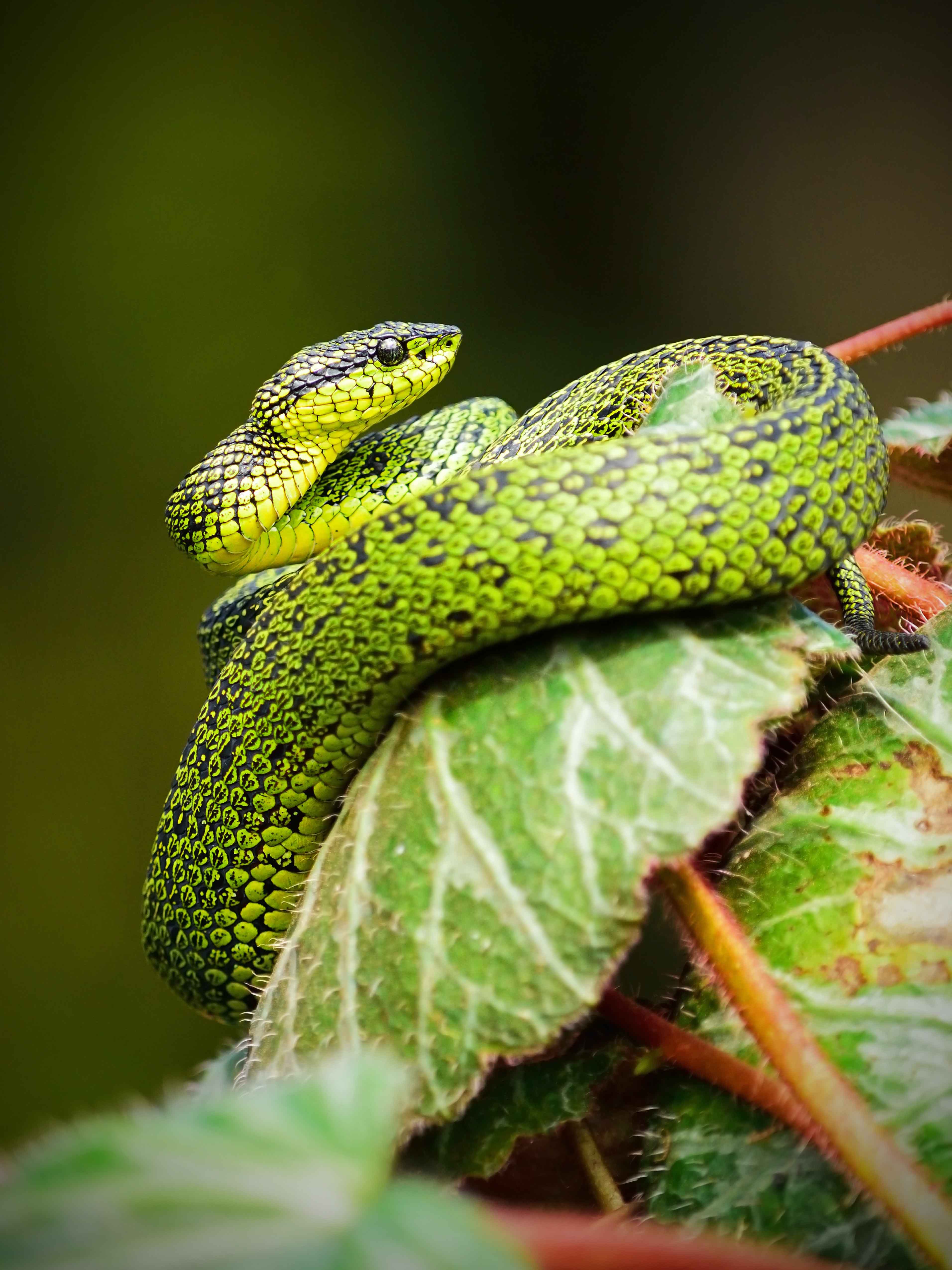
Environmental Factors Influencing Snake Behaviour
Tropical environments, like that of Singapore, have weather patterns that affect snake activity. For example, snakes are more likely to be encountered during the rainy season, as they come out of hiding due to increase prey availability and changes in temperature and humidity. Understanding how environmental conditions affect snake behaviour can help people predict and prevent encounters.
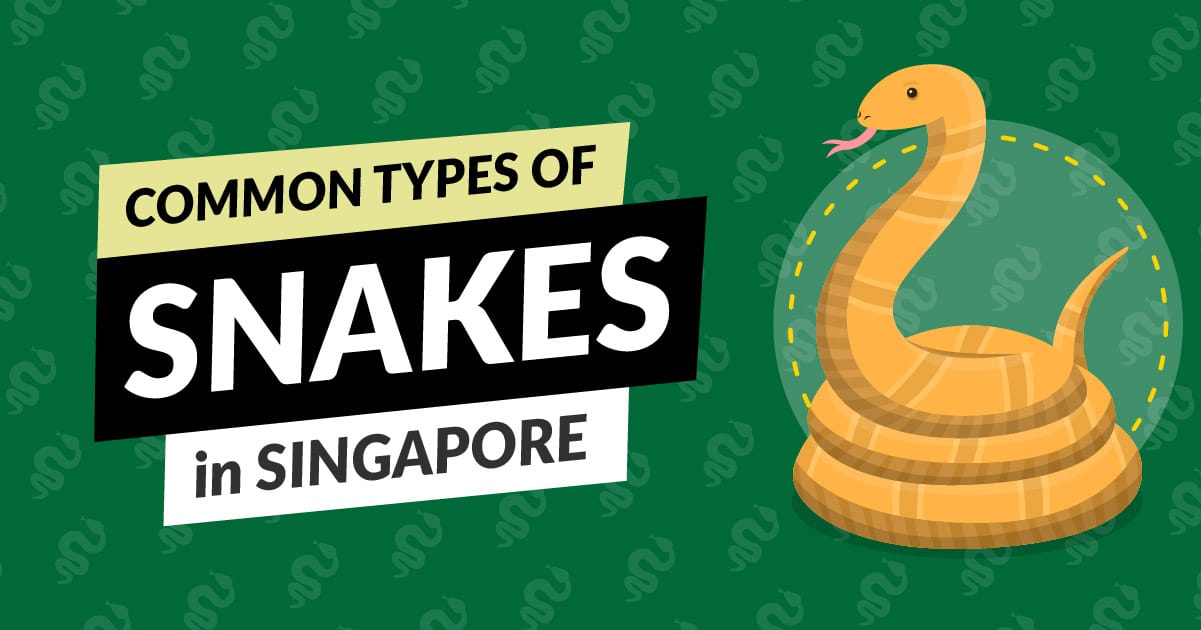
Types of Snakes in Singapore
There are over 3000 snake species in the world, but not all of them can be found in Singapore. Here are some common types of snakes in Singapore:
- Reticulated Python (Malayopython reticulatus)
- King Cobra (Ophiophagus hannah)
- Black Spitting Cobra (Naja sumatrana)
- Oriental Whip Snake (Ahaetulla prasina)
- Banded Krait (Bungarus fasciatus)
- Banded Malayan Coral Snake (Calliophis intestinalis)
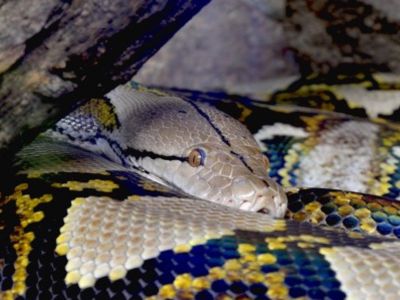
Reticulated Python (Malayopython Reticulatus)
The reticulated python is the longest snake in the world. It can reach over 8 meters. Reticulated pythons have a distinct, alternating, consistent zigzag pattern of black, yellow, brown, and white scales. It is non-venomous and feeds mainly on small mammals, rodents, and birds.
Although the reticulated python is non-venomous, it has the strength and length to constrict its prey before feeding on it. It is nocturnal, meaning that the reticulated python is primarily active at night. In addition, it can be found in a wide range of habitats from low land to highland, forests, mangroves, and drain canals. In Singapore, pythons are commonly found inhabiting urban areas such as drains and canals.
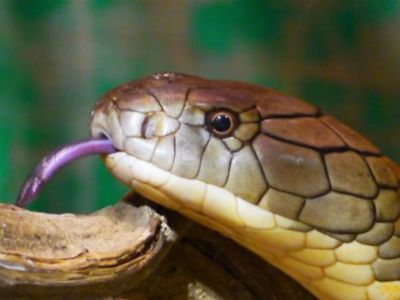
King Cobra (Ophiophagus Hannah)
The king cobra is notoriously known as the world’s largest venomous snake with an average of 3 meters in length. King cobras can be found in varying colours but are mainly in shades of light brown to dark brown and even black with a pale-yellow tint. They can be seen in forests or lowland areas to areas of high elevation.
King Cobras are diurnal as they usually hunt during the day. Their diet consists of other snakes, rodents, and lizards. King Cobras are shy and retreating. However, they can be aggressive when provoked or cornered. Thus, one should never try to confront King Cobras to avoid getting fatal bites. If encountered, it is best to stay clear of its path and move away quickly.
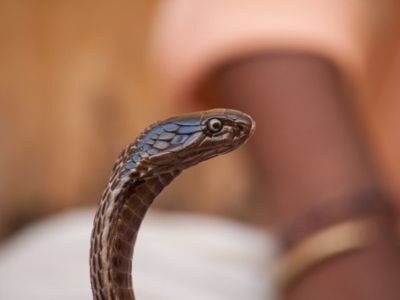
Black Spitting Cobra (Naja Sumatrana)
The Black Spitting Cobra is also known as the Equatorial Spitting Cobra. As the name suggests, the black spitting cobra can contract its venom gland to spit venom onto its target, mainly aiming for the eyes. The venom can cause severe damage to the eyes and their surrounding areas, and may cause blindness if left untreated. The Black Spitting Cobra diet consists of rodents and amphibians. It is active at night, and prefers cooler places like shelters, drains, and garden walls.
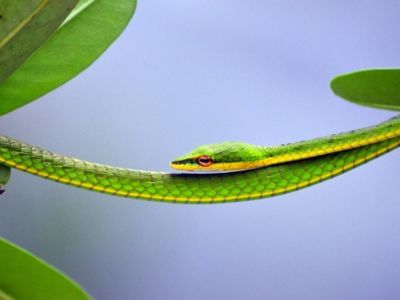
Oriental Whip Snake (Ahaetulla Prasina)
The oriental whip snake is a fairly small and lanky snake. Its appearance can range from light brown to bright green, and its coloration allows it to blend in with vegetation. Oriental whip snakes can grow up to approximately 2 meters in length. They feed on birds, lizards, and frogs with the help of their venom.
Not all oriental whip snakes are venomous and the venomous ones will not result in death. As the venom is usually relatively weak, oriental whip snakes are not problematic to humans. Oriental whip snakes are active during the day and are typically seen amongst low-hanging trees or tangled between vines in forested areas.

Banded Krait (Bungarus Fasciatus)
The banded krait is one of the more prominently patterned snakes with black and white stripes from head to tail. It feeds mainly on other snakes as well as animals such as rodents, lizards, cats, and fish. Banded krait is nocturnal and can be found in forested areas near rodent holes, termite mounds, and places close to water. This species should always only be spotted from afar and not approached, as it is venomous and may bite if threatened.
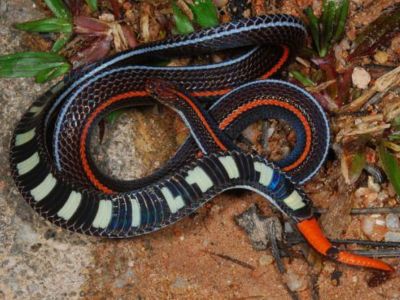
Banded Malayan Coral Snake (Calliophis Intestinalis)
The banded Malayan coral snake has an average size of 40 to 60cm in length. It can be distinguished by its bright red tail and reddish stripe along the length on the top side of the body. Banded Malayan coral snakes feed on other snakes and are active at night, commonly found in forests, parks, and gardens. Although a banded Malayan coral snake may look small and attractive, its venom is potent, so one should never try to approach it.
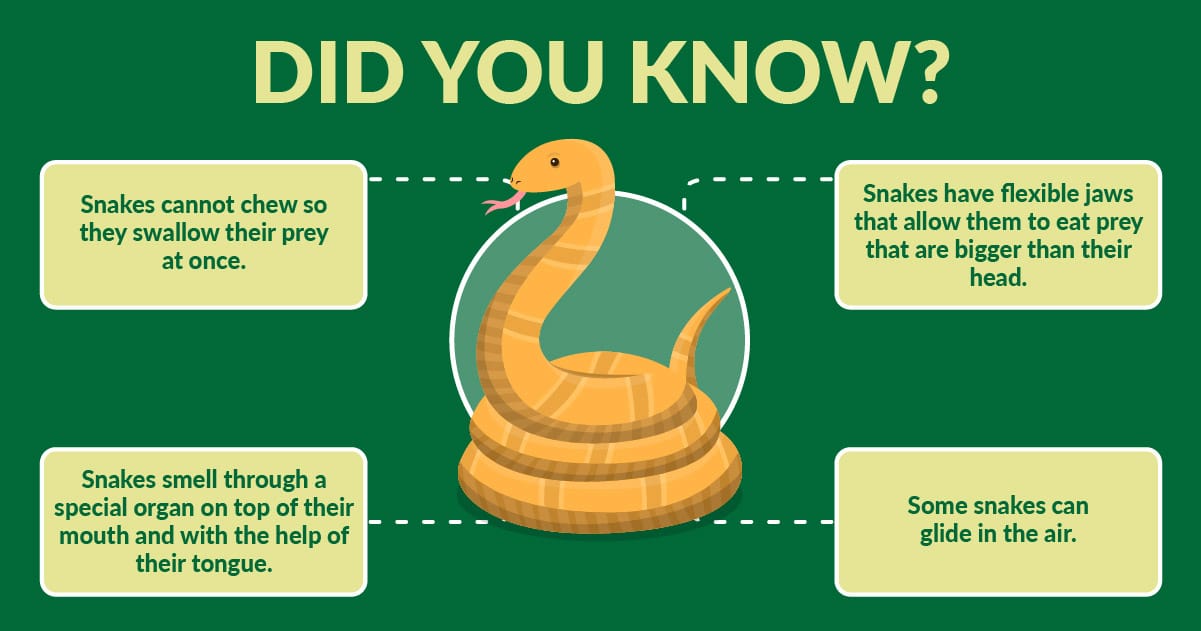
Life Cycle and Biology
Depending on the species, snakes can live more than 20 years, with the larger ones having a longer lifespan than the smaller ones. Snakes are born in eggs. There are two types of egg births known:
- Oviparity
- Ovoviviparity
Most snakes are oviparous, meaning that they lay their eggs outside their bodies, and young snakes will hatch from the eggs. Ovoviviparous snakes also produce eggs, but they keep the eggs inside their bodies during incubation. The newly hatched snakes will look like they were born directly from the mothers’ body.
Although snakes are legless reptiles, not all legless reptiles are snakes. For example, lizards only have front or back limbs or are completely legless. All snakes are predators, but only a portion of them are venomous. Even a smaller fraction of snakes are capable of inflicting lethal bites.
Interesting fact: Snakes can't chew their food, so they have to swallow it whole (even items up to 10 times bigger than the size of their head).
Medical Importance
One reason that causes the fear of snakes is a snakes’ ability to inflict lethal bites. According to the World Health Organisation (WHO):
- There are over 3000 species of snakes in the world
- 600 snake species are venomous
- Over 200 species of venomous snakes are considered to be medically important
These medically important venomous snakes can cause injury, disability, and even death. The symptoms associated with snake bites vary depending on the type of snake.
Symptoms include:
- Puncture wounds or bite marks on the skin
- Redness, swelling, bruising, blistering, or bleeding around the bite
- Severe pain and tenderness
- Nausea, vomiting, diarrhoea, dizziness, headaches, and blurred vision
- Shortness of breath
- Rapid heart rate, weak pulse, low blood pressure
- Metallic, mint, or rubber taste in the mouth
- Increased salivation and sweating
- Numbness or tingling around the face and/or limbs
- Muscle twitching
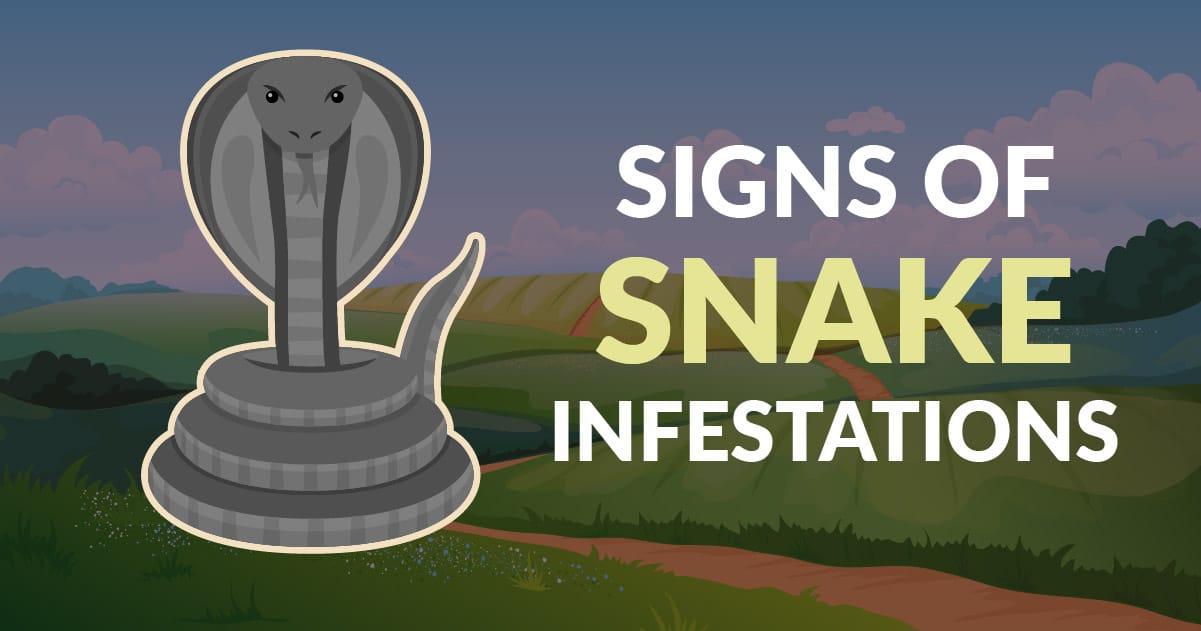
Signs of Snake Infestations
1. Shed skin
Snakes shed their skin as they grow. The discarded skins may be found in places where snakes rest. This is one of the most apparent signs of snake infestations. While it may be fine to spot one around your house, you should be concerned if you see snakes frequently.
2. Slither tracks
Snakes have a unique movement known as slithering. As they slither, they leave behind distinct tracks on the dusty or sandy ground.
3. Droppings
The faeces of snakes are another important sign of a snake infestation. Snakes’ faeces may resemble birds’ droppings as they are liquid and contain urine, or they may be in a solid form that contains undigested pieces of their food, such as bones and hairs.
4. Strange noises
Although snakes are silent and do not vocalise, they may make noises as they move through cluttered areas and touch other objects. The sounds of slithering and falling objects may be a sign of a snake infestation.
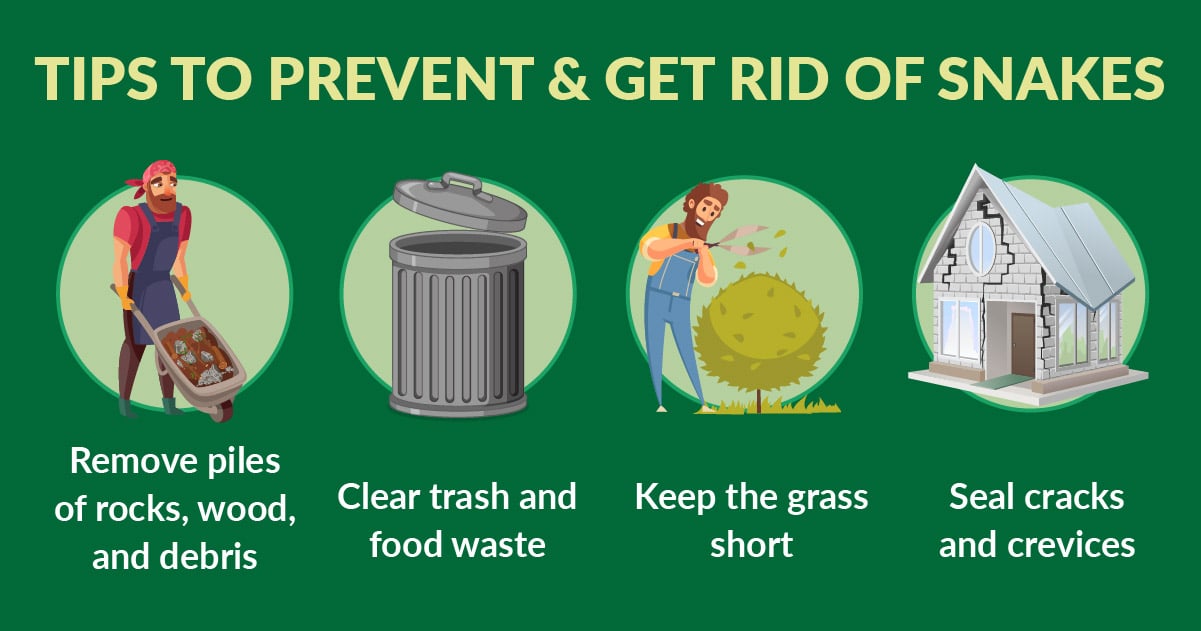
How to Prevent Snakes from Invading Your Home
1. Remove piles of rocks, wood, and debris
Piles of rocks, wood and debris serve as the hiding places of snakes and their prey. Maintain good housekeeping and keep your house free from debris to help prevent infestations of snakes.
Clutters and piles of debris provide ideal hiding and breeding sites for animals such as rodents, which serve as a food source for snakes. Snakes can also seek shelter among the clutter as they provide protection from predators and harsh weather conditions.
2. Clear trash and food waste
Although snakes are predators and do not feed on human food waste, food waste attracts pests like rodents. Rodents, in turn, are food sources of snakes. Waste bins should be covered. Food waste should be properly disposed of to prevent rodents from gaining access to the food, as this can cause rodent infestations, and subsequently, snake infestations.
3. Keep the grass short
Not only does grass attract mosquitoes, but it also attracts snakes. Long grass provides the perfect cover for snakes to hide from their predators and sneak up to their prey. Snakes are found in a variety of colours and patterns that they use as camouflage. The presence of long grass further facilitates snakes to blend in with the surroundings.
4. Seal cracks and crevices
Cracks and crevices are the hiding spots for pests, including snakes. Cracks and crevices provide shelter for snakes and protect them from threats present in the surrounding environment. Snakes can also enter your house from the surroundings through cracks or holes. Do look out for all potential entry points, cracks and crevices around your home. Make sure to seal them to avoid harbouring snakes and other pests in your house.
DIY Methods to Prevent Snakes in Singapore
Instead of trying out various methods to repel snakes, you can try to maintain good housekeeping around your house to keep snakes away from you. Sealing all the potential entry points and hiding sites mentioned above will help to prevent snakes from entering your home.
What to do When You Encounter a Snake?
Snakes are not as terrifying as they seem. By knowing what to do when you encounter them, no harm will be done to you or the snakes. Always remind yourself to remain calm and not panic when seeing a snake. Panicking may cause you to make the wrong decisions.
Snakes usually have no interest in humans as they usually prey on other small animals. The snake may be startled or provoked by your actions thus causing them to attack you. It is likely for snakes to flee when they see humans, so you should also walk away from them if possible.
Professional Snake Removal in Singapore
Handling snakes on your own is not a good idea. Seeking help from professionals will be the right way. Avoid confronting or attacking a snake with a stick or broom as it may still be able to injure you.
If you ever get bitten by a snake, it is important to try to stay calm and seek immediate medical attention. You might have probably seen someone sucking out snake venom from a victim in a movie scene. However, in reality, it is almost impossible to suck the venom out as it spreads quickly and efficiently in the lymphatic system. The best thing to do if you ever get bitten by snakes is to minimise movement and call a doctor or an ambulance immediately.

Wildlife Intrusion? Let Us Help.
We offer fast and effective solutions to ensure a secure environment for your home or business while prioritizing wildlife protection.
Handling Snakes by Killem Pest
Many agencies like Wildlife Reserves Singapore (WRS), Animal Concerns Research and Education Society (ACRES) and Agri-Food & Veterinary Authority of Singapore (AVA) are dedicated to protecting and educating the community about wildlife. Killem is no stranger to wildlife and handling snakes, working closely with these agencies to ensure that these animals are handled with care and handed over to them.
With the recent enforcement of the Wildlife Act in Singapore, special courses and training were prepared for people involved who deal with wildlife removal activities. Our PCOs are kept updated on any changes and continually attend seminars like the Wildlife Handling Seminar organised by the Singapore Pest Management Association (SPMA).
Our PMPs are trained in using a variety of equipment to trap and handle snakes safely and humanely. Snake tongs are a piece of equipment with a long pole that ensures a safe distance from the head of the snake. The controllable jaws at the end of the grabber help to lift or drag the snake away firmly and gently. Besides snake tongs, other ways snakes can be captured include using towels, bags, pillowcases and dustbins.
Venomous snakes require more caution when handling compared to non-venomous snakes as they differ in terms of movement and behaviour where the former moves its head before moving its body.
From our experience, snakes should never be restrained at the head or by their tail. This is because these are their sensitive regions, restraining their head and tail can provoke their aggressive behaviour as they feel threatened. Restrained or temporarily captured venomous snakes should always be labelled, as some can spit venom up to 2m and even chew through the bags they are contained in.
Frequently Asked Questions
There are 7 species native to Singapore that are considered highly poisonous: the King Cobra, Black Spitting Cobra, the Banded Krait, Banded Coral Snake, the Malayan Blue Coral Snake, and the Wagler’s Pit Viper.
Venomous snakes can be identified by the shape of their head: a triangular head is a sign that a snake is venomous. If its tail is rattling, it’s venomous. In any case, it’s best to stay away from any snakes.
Snakes are often attracted to yards and houses when there’s food or shelter for them. This can include leaf piles, gaps or cracks in your house, composting near the house, or else. Feeding pets outside, birdfeeders, or mulch can also draw snakes to your yard.
Although snakes mostly live in forested areas, you can encounter them in city areas as well. Gardens and lawns or parks can be hot spots for snakes.
Snakes can enter your house through holes and cracks in the building, or they can also squeeze into gaps between doors or water pipes, or climb into the attic.
It is advised not to try to get rid of snakes on your own, so better call the wildlife control company. While you are waiting for help, you can try to create a barrier around the snake and open doors and windows for it to escape.
How to Handle Wildlife in Singapore
Snakes
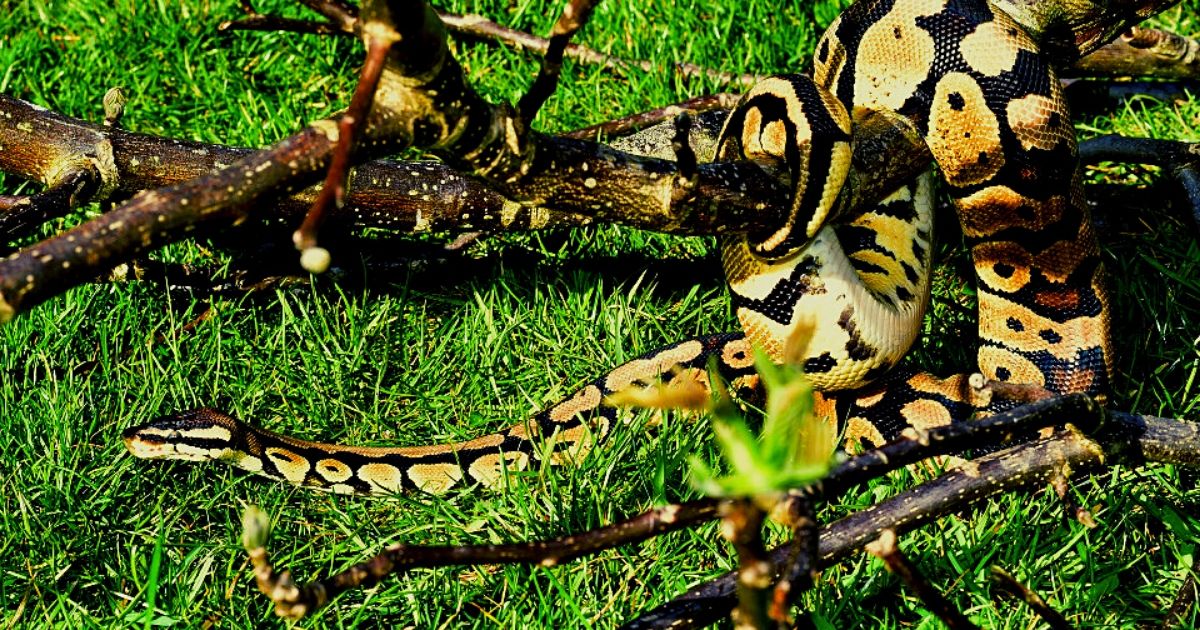
The landscape in Singapore is built and maintained such that wildlife co-exists with the people living around their habitat very closely. With limited living spaces, it is not uncommon to find a monitor lizard crawling near concrete buildings that are close to parks and woodland, or for wild boars to be seen crossing roads in quiet residential areas.
There are signs in places like parks to ensure that people are warned of probable encounters with wildlife and to stop feeding or disturbing them. These animals forage beyond their homes, lurking near food sources left by people. They may not be the dangerous wild elephants or tigers found in other Asian countries, but wildlife in Singapore can become a threat if encounters are not handled appropriately.
Wildlife in Singapore: Protection and Education
Many agencies like Wildlife Reserves Singapore (WRS), Animal Concerns Research and Education Society (ACRES) and Agri-Food & Veterinary Authority of Singapore (AVA) are dedicated to protecting and educating the community about wildlife. Killem is no stranger to wildlife, working closely with these agencies to ensure that these animals are handled with care and handed over to them.
Killem’s Pest Management Professionals (PMPs) have many run-ins with wild snakes, monitor lizards and many other animals.
They are competent in handling any situation, always ready with their protective equipment and abide by the law and acts pertaining to wildlife in Singapore.
Our PMPs are kept updated on any changes and continually attend seminars like the Wildlife Handling Seminar organised by the Singapore Pest Management Association (SPMA) in June this year.
Dr Abraham Mathew, who is a senior veterinarian and wildlife expert from WRS, conducted a meaningful seminar that was attended by 8 of Killem’s representatives. He was very wilful in sharing his thoughts and techniques on handling wildlife in Singapore to ensure the safety of both the people and especially the animals. It was an eye-opener for many as we learned that animals are just as afraid of us as we are of them, finding ways to protect themselves from fear of harm. The ways in which people can protect themselves are as simple as moving away and placing space between animals and not making quick or sudden movements.
Wildlife in Singapore: Snakes
One of the more feared and underappreciated animals is snakes but Dr Abraham Mathew was able to place confidence in us with techniques and pointers for handling them.
Like many, we were concerned of snake bites as Singapore is home to both venomous and non-venomous snakes.
The non-venomous kinds leave a row of bite marks when bitten, evidence that they don’t have venom. Concern rises when it’s a venomous snake that has bitten where the snake leaves two fang punctures and starts to chew. Even though the venom is for digesting its food, people once bitten should get immediate help. Our PCOs realised how the situation can be handled without any stress with the right treatment of the animals.
Want to find out more about wildlife removal in Singapore?

Dr Abraham Mathew stressed the importance of strength in gentleness when handling snakes and wildlife alike. It may seem like a daunting task to remain calm in the presence of a snake or when bitten by one but doing just that can help with the situation tremendously. The gentlest movements can put a hyperalert snake at ease to an extent it mistakes its handler’s hand for a tree branch. Proper restraining techniques and equipment should be used as total immobilization of animals or restricting movements will affect animals’ behaviour and activities.
Our PMPs have experience handling snakes and thus are confident in using equipment like snake thongs when restraining them. Other ways snakes can be captured include using towels, bags, pillowcases and dustbins as makeshift snake containment enclosures.
Venomous snakes require more caution when handling compared to non-venomous snakes as they differ in terms of movement and behaviour where the former moves its head before moving its body.
Snakes should never be restrained at the head or by their sensitive tail. Restrained or temporarily captured venomous snakes should always be labelled, as some can spit venom up to 2m and even chew through the bags they are contained in.
In addition to the presentations done by Dr Abraham Mathew, Mr Kalai Vanan Balakrishnan of ACRES enlightened the attendees on how the drainage structures all over Singapore act as passageways for snakes and reptiles to move around and as habitation. From time to time, wild animals can cross our paths but to ensure they don’t venture too close to our living spaces, homes should be inspected for holes or gaps, sealing them shut.
Wildlife in Singapore: Lizards
Lizards are less-feared wildlife than snakes. In Singapore, there are many types of lizards. The more known ones are the tiny geckos, but the large specie called Monitor Lizards are active in the wild.
The Malayan water monitor is the largest one known to be active in Singapore and can get up to 3 meters long. One place where they are present is the Singapore Botanic Gardens. Malayan water monitor lizards love urban jungles and being in close proximity to water.
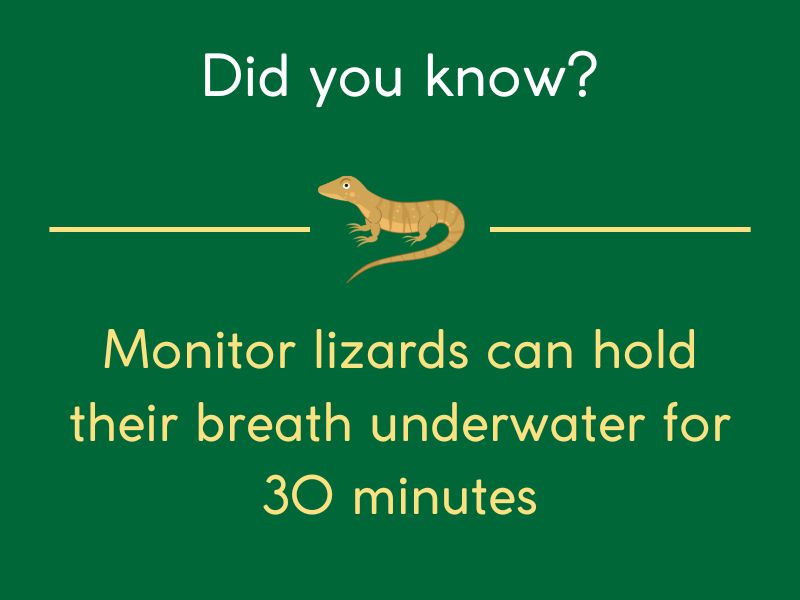
Wildlife in Singapore: Birds
The status of Birds in Singapore is defined in the Singapore Red Data book. This includes bird species that are vulnerable, endangered and presumed extinct, as well as common bird species that are of less concern in terms of their population. For example, most species of pigeons fall under the latter category.
Birds with vulnerable or endangered status are protected by Singaporean law, meaning that it is illegal to handle those species of birds without a permit.
Singapore records well over 400 bird species. Common birds in Singapore include:
- Pigeons
- Javan Myna
- Common Myna
- House Crow
- Asian Glossy Starling
Wildlife in Singapore: Policies
The Wild Animals and Birds Act (WABA) was highlighted, and it was made clear that feeding wildlife in Singapore is illegal. Animals should not be accustomed to food handed from humans as this might alter their behaviour towards humans, making them more aggressive. An endearing long-tailed macaque can become a hostile animal with just a flash of teeth from our smiles and laughs as what we assume as a harmless action is deduced as a sign of challenge for a monkey.
There were many concerns raised by the Wild Animals Legislation Review Committee (WALRC) formed by a Member of Parliament for Nee Soon GRC Louis Ng and consisting of various stakeholders from the pest control companies, religious organisations, town councils and nature community on the recent proposals for amendments to the WABA. The WALRC has proposed as one of the amendments, for the deployment of traps for all wildlife to be done only by qualified individuals. Animals such as wild boars have reportedly increased in sightings, indicating the ideal living conditions and increase in population. These bans on deploying traps can safeguard animals from illegal poaching and endangerment.
Pro Tip: Handling wildlife on your own is not a good idea, it's better to seek help from professionals that ensure that these animals are handled with care.
People have responded in favour of stronger penalties and protection for wildlife in Singapore through the discussions and surveys conducted by WALRC. The proposed amendments aim to fill any gaps in the WABA, protecting wildlife all the same, regardless of whether they are in protected national park areas or beyond.
Our PMPs are trained to refrain from unnecessary disruption to wildlife, respecting each being and handing over to the respective authorities when it’s beyond their means. Wildlife in Singapore, however small, will be a part of our living spaces from time to time. Killem aims to pursue more humane ways when handling wildlife and playing its part to ensure the safety of the public and not forgetting the animals.
Wildlife Trapping Permit
Did you know that Killem Pest has been granted approval by the National Parks Board (NParks) to trap and take certain wildlife under the Wildlife Act 1965? This is an honourable accreditation and Killem Pest has done and will continue to adhere to all applicable laws and regulations to handle wildlife in Singapore.
The following is a list of wildlife for which we have been granted approval to take and trap.
Snakes
- Brahminy blind snake
- Sunbeam snake
- Reticulated python
- Oriental whip snake
- Gold-ringed cat snake
- Dog-toothed cat snake
- Paradise tree snake
- Twin-barred tree snake
- Common Malayan racer
- Striped bronzeback
- Kopstein’s bronzeback
- Painted bronzeback
- Malayan bridle snake
- Keel-bellied whip snake
- Red-tailed racer
- Common house snake
- Striped kukri snake
- Keeled rat snake
- White-bellied rat snake
- Indochinese rat snake
- Black-headed collared snake
- Puff-faced water snake
- Equatorial spitting cobra
- King cobra
- Shore pit viper
- Wagler’s pit viper
Lizards
- Malayan water monitor
- Clouded monitor
- Green iguana
- Changeable lizard
- Green crested lizard
- Black-bearded gliding lizard
- Five-banded gliding lizard
- Common gliding lizard
- Maritime gecko
- Common sun skink
- Long-tailed sun skink
- Supple skink
- Thai supple skink
- Brown anole

Wildlife Intrusion? Let Us Help.
We offer fast and effective solutions to ensure a secure environment for your home or business while prioritizing wildlife protection.
Frequently Asked Questions
Singapore has a very diverse flora and fauna – it is home to over 40,000 kinds of non-microbial organisms.
Although Singapore is an urban city, it is not uncommon to meet boars, lizards, snakes, bats, millipedes, and other wildlife there.
Among dangerous wildlife in Singapore, you should be aware of some poisonous bugs, spiders, and snakes that are better to avoid.
The 6 Common Snakes in Singapore
Snakes
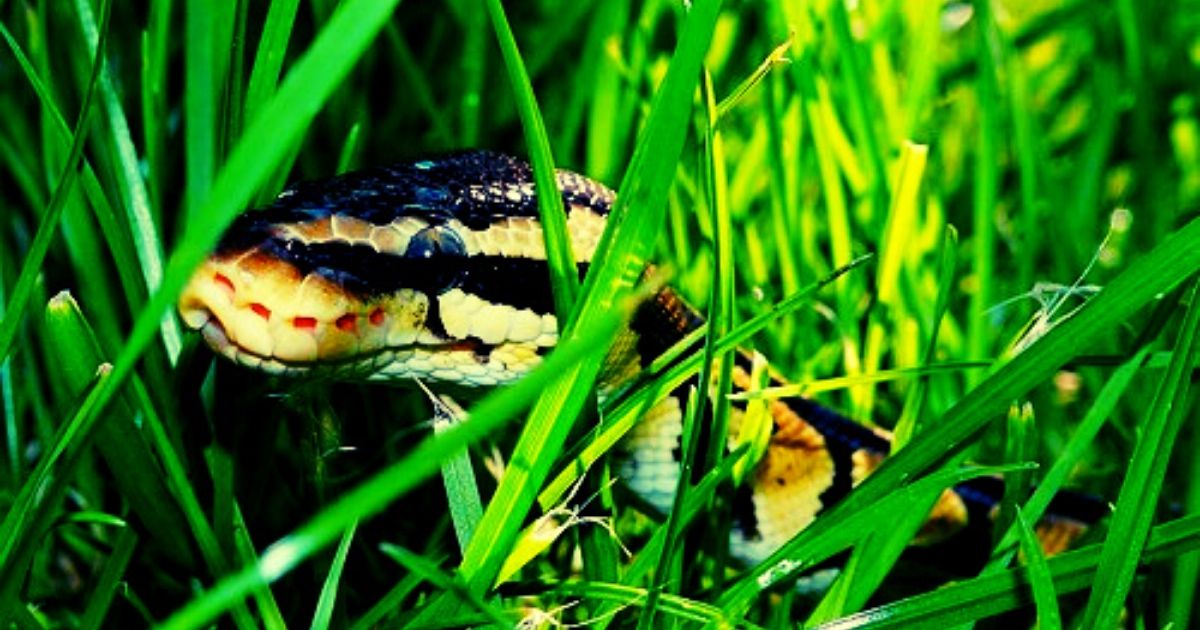
A major part of Singapore is occupied by skyscrapers and buildings, turning the landscape into a concrete jungle. The consequences of this urbanization mean animals are affected as they are forced to retreat to more natural habitats, which are still in close proximity to houses and buildings.
From time to time, snakes may pay visits to residential areas and public places. Although they are creatures to be feared and are disliked by many, it is still important to be educated about them if ever faced with a snake on your path.

A snake is a reptile without limbs that has features such as a short tail, jaws capable of extending itself considerably, unmoving eyelids, and some with venom and fangs. There are exceptions to these as certain snakes have limbs and some snakes are non-venomous.
The differences between venomous and non-venomous snakes may not be very obvious but it is important that people are aware of the dangers of these snakes.
There have been many species encountered in Singapore but there are 6 common snakes to be highlighted.
Some of these snakes can be dangerous and professional help should be sought if they need to be removed.
Scientific Name: Bungarus Fasciatus
Venom: Yes
Food: Other snakes mostly, rodents, cats, lizards, and fish
Active Time: Nocturnal, active at night
Habitat: Rodent holes, termite mounds, and places close to the water
One of the more prominently patterned snakes, the Banded Krait is stripped in black and white from head to tail. It has a mostly black head and a body with a triangular cross-section. This is one that can be spotted from afar and should not be approached as it is venomous and may bite if threatened.
They are normally active at night, where they hunt for their prey.
They feed on other snakes especially, even the venomous ones, as well as rodents, cats, lizards, and fishes to name a few. Based on their eating habits, they can be found in forested areas near rodent holes, termite mounds, and places close to water.
Scientific Name: Calliophis intestinalis
Venom: Yes
Food: Other snakes
Active Time: Nocturnal, active at night
Habitat: Forests, parks, and gardens
The Banded Malayan Coral Snake, also known as the Calliophis Intestinalis, is a venomous snake. It can grow up to 50cm in length and can be distinguished from the reddish stripe along the length on the top side of the body and the bright red tail. On the underside, however, it has contrasting stripes of black and white that it flips to and portrays when threatened.
In Singapore, the chances of crossing this snake can be high if visits to parks and forested areas are frequent.
They mainly eat other snakes and are known to eat even their young ones. They are active at night and therefore can be difficult to spot.
They may look small and attractive but their venom can be potent. It is best to stay away from them if sighted.
Want to find out more about snake removal in Singapore?
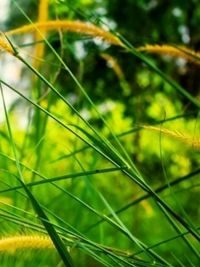
Scientific Name: Naja Sumatrana
Venom: Yes
Food: Rodents and other amphibians
Active Time: Nocturnal, active at night
Habitat: Cooler places like shelters, drains, and garden walls
The Naja Sumatrana, also known as the Black Spitting Cobra, spits venom if it feels threatened at a closer distance, as the name suggests. It does so to aim its venom at the victim’s eyes. The eyes and areas surrounding it should be washed immediately to stop the spread of permanent damage the venom does to the tissues. If bitten, the venom can cause death.
They are normally black if not black with a slight blue tinge. They are known to be aggressive if provoked, erecting their hood, standing tall, hissing at their tormentor, and finally spitting venom as a final resort. These should be considered as warning signs if this snake is encountered.
Scientific Name: Ophiophagus hannah
Venom: Yes
Food: Mostly other snakes, rodents and lizards
Active Time: Most active in the daytime
Habitat: Forests, lowland areas to areas of high elevation
The King Cobra is known to be the largest venomous snake in the world. It is notoriously known throughout the world to be a dangerous snake that everyone fears. They can be extremely aggressive in other parts of the world though they are not as much in Singapore. If encountered, however, it is best to stay clear of its path and move away quickly as a bite and venom from this snake can be fatal.
This snake is generally big and its hood is distinctively bigger when spread fully. They can stand tall as high as six feet from the ground and project a hissing sound almost resembling a growl, to intimidate their tormentor.
They are of varying colours but are mainly in shades of light brown to dark brown and even black with a pale yellow underside. It has a set of large head shields that are not seen in most other snakes. All these features may give the snake a graceful look but it is in the least bit gentle if encountered.
It feeds on other snakes predominantly, not leaving the venomous ones either, as well as rodents and lizards.
In Singapore, this snake was encountered fighting a Reticulated Python once and had to be removed by Killem’s Pest Control Operators.
Professionals should be engaged in such cases as they have the proper equipment and are educated on how to safely remove such snakes.
Scientific Name: Ahaetulla prasina
Venom: Mild
Food: Birds, frogs and lizards
Active Time: Most active in the daytime
Habitat: Forests, parks, residential areas with trees and amongst vegetation
Snakes may look vicious but not all of them are venomous. There are also some snakes that are venomous but the amount of toxin may not be sufficient to cause fatality in humans.
This is a fairly small and lanky snake that is able to blend in with the vegetation due to its bright green coloured scales. They can grow up to a maximum of about two meters in length and can also vary in colours from light brown to bright green. They are usually seen amongst low hanging trees or tangled between vines in forested areas.
They may not seem like they can do much harm but they do in fact carry venom, though not enough to kill a human. Small birds, frogs and lizards usually fall prey to this snake. If encountered, do let this snake slide away as it prefers to avoid confrontation but if agitated, it may bite.
Pro DIY tip: Cinnamon and clove oil can be effective snake repellents.
Scientific Name: Malayopython Reticulatus
Venom: No
Food: Small mammals, rodents and birds
Active Time: Active mostly at night
Habitat: Low land to highland, mangroves, forests and drain canals
One of the most widely known snakes, the Reticulated Python is the world’s longest snake at almost ten over meters being the longest. It has an unmistakable alternating, consistent, zigzag pattern of black, yellow, brown and white scales that is recognisable all over the world. This python has a head that is protracted outwards, longer than other snake species and has eyes that are dull orange with black slit-like pupils.
The way this snake hunts its prey is different as it constricts its prey, suffocating it before having it as a meal.
This was the other species of snake that was in a battle with the King Cobra, mentioned earlier, constricting it as much as possible given the big disadvantage in size. It may not be venomous but it is still able to bite and suffocate its victim.
It has a diet of small mammals such as pigs, dears, rodents and birds. The pythons found in Singapore are comfortable inhabiting urbanised areas such as the drains and canals.
They are able to adapt to changing environments but can still be found in forested areas. They are active at night but can be seen hunting even in the daytime. The sheer length and strength it renders to constrict its victim are indications that professionals should be called immediately once sighted.
How to get rid of snakes in your yard?
To get rid of snakes in your yard, start by removing potential food sources like rodents and minimizing hiding spots such as tall grass and debris. Make sure to seal all entry points to prevent snakes access. If the infestation persists or involves venomous snakes, seek professional help from Killem Pest to ensure safety and effective removal.
How to prevent snakes from entering home?
To keep snakes from entering your home, install snake-proof fencing and seal all potential entry points, such as gaps in doors, windows, and foundation. Use mesh screens on vents and maintain closed doors and windows. Eliminate all factors that potentially attract snakes, like food, garbage, or shelter.
Professional Snake Removal Services
Snakes can be dangerous but are sometimes a blessing in disguise, as mentioned in one of our previous posts… What Common Pests Are Found in Your Garden? where snakes were known to reduce the rodent population in residential areas and gardens.
It is important to know the difference between venomous and non-venomous snakes so that extra caution can be taken. Like most other creatures, they prefer to be unprovoked and are not confrontational.
The best way to stay clear of any unexpected attacks if encountered with a snake in your path would be to leave ample space between yourself and the snake as well as a clear exit route for the snake to slip away.
If you do come across any snakes in your residential area or in urban places, do call a professional immediately as they may pose a threat to others.
The Pest Control Operators (PCOs) at Killem are able to rescue, remove and capture snakes that are then released back into the wild, away from the urban landscape.
Proper equipment such as snake thongs, gloves of thick material, heavy-duty boots, goggles, long-sleeved shirts, and pants should be used when handling a snake. Engaging a professional is always the safest option when it comes to handling snakes.

Wildlife Intrusion? Let Us Help.
We offer fast and effective solutions to ensure a secure environment for your home or business while prioritizing wildlife protection.
Frequently Asked Questions
Although it’s a relatively small place, there are a lot of snakes in Singapore. While there are over 3000 snake species in the world, only around 70 species can be found in Singapore.
Among 67 species of snakes that can be found in Singapore, around 15 species are considered venomous and can potentially be life-threatening.
Snakes can usually be found in forested green areas of Singapore, though some of the species can be found near city drains and canals. Occasionally (though very uncommon) snakes can also appear near houses and other urban areas.
What Common Pests Are Found in Your Garden?
Snakes

You may love spending time in your backyard and tending to your garden. Your children and pets also enjoy playing outside. Perhaps you grow flowers, or vegetables and fruit for you and the family to eat. However, many different types of pests enjoy the garden just as much as you do, and that can be a problem. Let’s take a look at some of the most common pests that like to hang out in the garden.
Table of Contents
Bees and Wasps
If you see a bee or two in your garden, it’s not usually a sign to worry. In fact, bees are essential for pollination, and they can do your garden, and the rest of the gardens in the area, a favor. However, when it comes to wasps, or if you have too many bees that are causing problems, you may want to contact a bee or wasp removal specialist to have them removed because the stings are not only painful, but may also be fatal to people that are allergic to bee and wasp stings.
Snakes
Most people hate seeing snakes in the garden, and they do have the potential to be a problem.
If you have non-venomous snakes that are small and not overly aggressive, they can help to control the rodent population, which is another garden pest we will discuss.
However, if the snakes are venomous, if it is very big, if you are unsure about them, or if you simply have a fear and dislike for snakes, you should have them removed as soon as possible. This is an especially good idea if you have children or pets.
Termites
If you notice termite mounds in your garden, this is a very bad sign and an indication that you already have an infestation. While those termites will not be interested in the flowers and vegetables you are growing, they will be interested in marching to your house so they can start eating the wood so get a termite control specialist in to remove them as soon as possible.
Rodents
Rodents in the garden can be very destructive. They may start to eat at the items you are growing, and they are disease carriers. Nothing good comes from having rodents in the garden, and they may also decide to move inside your home where they can get at even more food and cause more issues.
Mosquitoes
Mosquitoes are very dangerous, not just annoying. These pests carry diseases, such as the Zika Virus and Dengue. They breed in areas of standing water, which could be a bird feeder, a puddle, or a water collection bin. It is always a good idea to have someone take care of the mosquitoes before they become a problem.
Want to find out more about pest removal in Singapore?
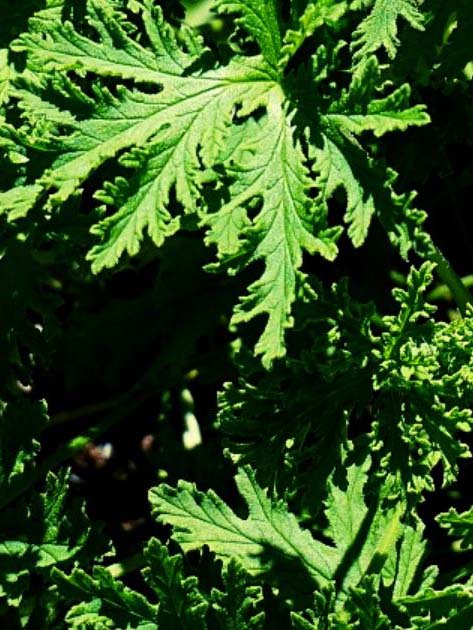
Ants
Depending on the types of ants in the garden, it might not be a problem.
Smaller ants can help with the pollination as they are crawling around the garden, and they can also help to keep caterpillars and other types of pests at bay.
They do not generally cause issues by eating anything in the garden, but if you have a lot of ants, they could always decide to head inside. It might still be a good idea to contact pest control.
Pest Control for Gardens
We have a list of the common garden pests in Singapore. Now let’s discuss some natural ways to protect your garden from pests.
Apply the following solutions to keep most common garden pests away:
- Citronella plants to prevent mosquitoes.
- Avoid overwatering to reduce high levels of dampness, as this attracts many types of pests.
- Dust off the leaves of plants to eliminate potential nesting sites.
- Dish soap mixed with water in a spray bottle can help get rid of many pests that settle on plants.
Pro Tip: Some natural remedies can be ineffective and make pest problems worse, so the best way to get rid of garden pests is to call a professional for help.
What Should You Do?
If you have pests in the garden, the best way to get rid of them is to call a professional for help. They can come and look at your problem, and then determine the best way to proceed and to provide you with a pest free environment.
If you would like more information on how Killem can help you keep your garden pest free, visit our residential pest control services page.

Pest Problem? Let Us Help.
We offer fast and effective precision treatments to eliminate pests while ensuring a safe environment for your home or business.
Frequently Asked Questions
Pests can cause major damage to your garden. They can chew holes in your leaves and feed on roots, which kills the plants.
Sometimes pests are not visible, but you can identify them by the damage in your garden, like holes in leaves, small grubs around the roots of container plants, and skeletonized leaves.
The best way to get rid of the pests is to prevent the infestation in the first place. Check your plants regularly and take measures as soon as you spot the signs of infestation.

